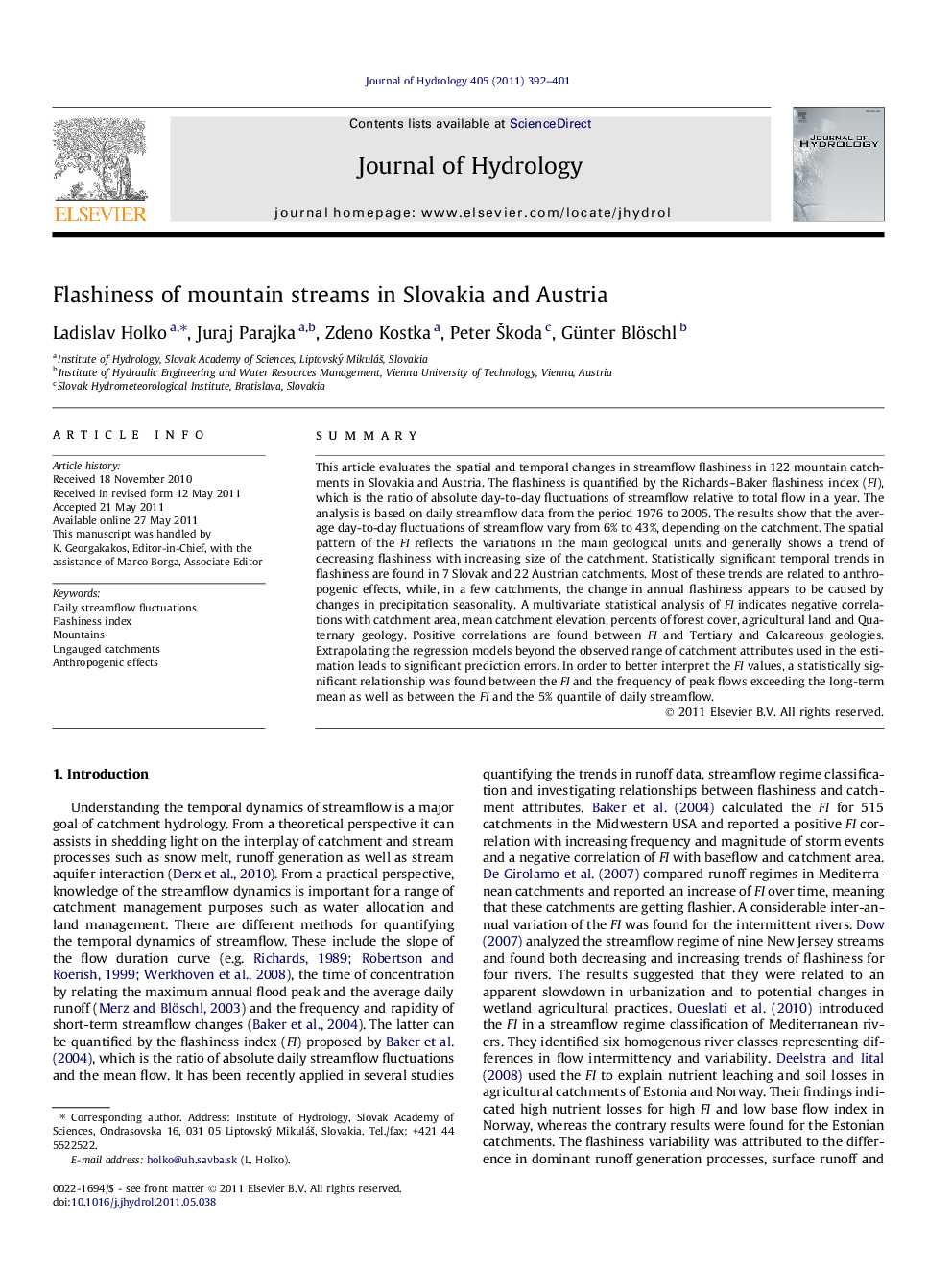| Article ID | Journal | Published Year | Pages | File Type |
|---|---|---|---|---|
| 4577407 | Journal of Hydrology | 2011 | 10 Pages |
SummaryThis article evaluates the spatial and temporal changes in streamflow flashiness in 122 mountain catchments in Slovakia and Austria. The flashiness is quantified by the Richards–Baker flashiness index (FI), which is the ratio of absolute day-to-day fluctuations of streamflow relative to total flow in a year. The analysis is based on daily streamflow data from the period 1976 to 2005. The results show that the average day-to-day fluctuations of streamflow vary from 6% to 43%, depending on the catchment. The spatial pattern of the FI reflects the variations in the main geological units and generally shows a trend of decreasing flashiness with increasing size of the catchment. Statistically significant temporal trends in flashiness are found in 7 Slovak and 22 Austrian catchments. Most of these trends are related to anthropogenic effects, while, in a few catchments, the change in annual flashiness appears to be caused by changes in precipitation seasonality. A multivariate statistical analysis of FI indicates negative correlations with catchment area, mean catchment elevation, percents of forest cover, agricultural land and Quaternary geology. Positive correlations are found between FI and Tertiary and Calcareous geologies. Extrapolating the regression models beyond the observed range of catchment attributes used in the estimation leads to significant prediction errors. In order to better interpret the FI values, a statistically significant relationship was found between the FI and the frequency of peak flows exceeding the long-term mean as well as between the FI and the 5% quantile of daily streamflow.
► We examine the Richards-Baker’s flashiness indices in 122 mountain catchment in Austria and Slovakia in period 1976–2005. ► Trends in flashiness indices were often caused by human hydrotechnical activities. ► Among catchment attributes, geology has an important influence on the flashiness index. ► Multivariate regression can describe the main spatial patterns of the flashiness index. ► Statistically significant relationships between the flashiness index and two discharge characteristics were found.
